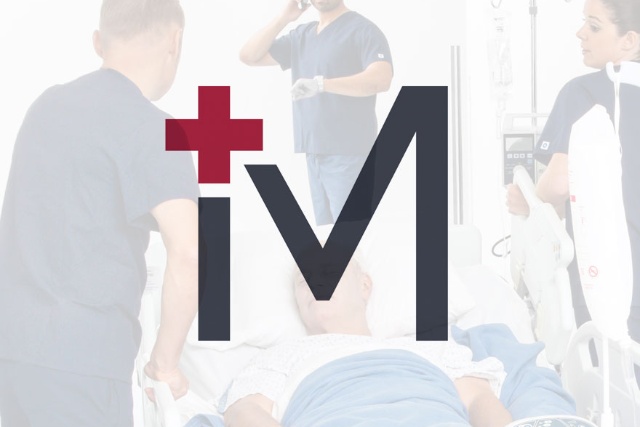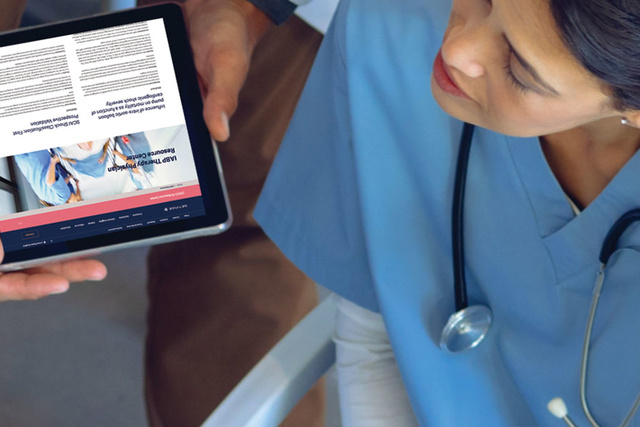Recent publications on mechanical circulatory support and cardiogenic shock
Influence of intra-aortic balloon pump on mortality as a function of cardiogenic shock severity
Jentzer JC, et al. Catheter Cardiovasc Interv. 2021; 1– 12..
Abstract
Background: Randomized studies of intra-aortic balloon pump (IABP) in cardiogenic shock (CS) have focused exclusively on patients with acute coronary syndromes (ACS) without stratification according to shock severity. We examined the association between IABP and mortality in CS patients across the Society for Cardiovascular Angiography and Intervention (SCAI) shock stages.
Methods: We included cardiac intensive care unit patients admitted from 2007 to 2015 with CS from any etiology. In-hospital mortality associated with IABP was examined in each SCAI shock stage. Multivariable logistic regression was performed using inverse probability of treatment weighting (IPTW) to determine the association between IABP and in-hospital mortality.
Results: We included 934 patients, with a mean age of 68 ± 14 years; 60% had ACS. The distribution of SCAI shock stages was: B, 41%; C, 13%; D, 38%; E, 8%. In-hospital mortality was lower in the 39% of patients who received IABP (27% vs. 43%, adjusted OR with IABP after IPTW 0.53, 95% CI 0.40-0.72, p < .0001). IABP use was associated with lower crude in-hospital mortality in each SCAI shock stage (all p < .05, except p = .08 in SCAI shock stage E). We did not observe any significant heterogeneity in the association between IABP use and in-hospital mortality as a function of SCAI shock stage.
Conclusions: IABP use was associated with substantially lower in-hospital mortality in patients with CS, without differences in this effect across the SCAI shock stages. Future studies should account for the severity and etiology of shock when evaluating the efficacy of IABP for CS. Keywords: cardiogenic; intra-aortic balloon pump; mechanical circulatory support; mortality; organ failure; shock; shockCICU.
SCAI Shock Classification: First Prospective Validation
Baran D, et al. Catheter Cardiovasc Interv. 2020 Dec;96(7):1339-1347
Abstract
Background: The outcome of cardiogenic shock complicating myocardial infarction has not appreciably changed in the last 30 years despite the development of various percutaneous mechanical circulatory support options. It is clear that there are varying degrees of cardiogenic shock but there is no robust classification scheme to categorize this disease state.
Methods: A multidisciplinary group of experts convened by the Society for Cardiovascular Angiography and Interventions was assembled to derive a proposed classification schema for cardiogenic shock. Representatives from cardiology (interventional, advanced heart failure, noninvasive), emergency medicine, critical care, and cardiac nursing all collaborated to develop the proposed schema.
Results: A system describing stages of cardiogenic shock from A to E was developed. Stage A is “at risk” for cardiogenic shock, stage B is “beginning” shock, stage C is “classic” cardiogenic shock, stage D is “deteriorating”, and E is “extremis”. The difference between stages B and C is the presence of hypoperfusion which is present in stages C and higher. Stage D implies that the initial set of interventions chosen have not restored stability and adequate perfusion despite at least 30 minutes of observation and stage E is the patient in extremis, highly unstable, often with cardiovascular collapse.
Conclusion: This proposed classification system is simple, clinically applicable across the care spectrum from pre-hospital providers to intensive care staff but will require future validation studies to assess its utility and potential prognostic implications.
Timing and Complications
The Next Stage in Cardiogenic Shock: Chapter 1
Navin D. Kapur, MD, FACC, FSCAI,FAHA
Review of contemporary approaches to defining cardiogenic shock and how to differentiate hemodynamic versus hemometabolic shock.
The Next Stage in Cardiogenic Shock: Chapter 2
Sandeep Nathan, MD, MS, FACC,FSCAI
Discussion on the treatment options and understanding the very important balance between providing support and avoiding complications
The Next Stage in Cardiogenic Shock: Chapter 3
Marc Cohen, MD, FACC
Navin Kapur, MD, FAHA, FACC,FSCAI
Sandeep Nathan, MD, MSc, FACC,FSCAI
Panel discussion on addressing complications, the multi-disciplinary approach and assessing the patient.
Ischemic vs Non-Ischemic Cardiogenic Shock
Beyond Ischemic Cardiogenic Shock - A Good Indication AND Superb Timing is Everything: Chapter 1
Corstiaan den Uil MD PHD
Overview of the SCAI shock classification and the importance of timely of identification and initiation of treatment.
Persistent Myocardial Ischemia: A Decisive Factor in IABP Efficacy?: Chapter 2
Lokien van Nunen MD PHD
A look into the dichotomy between IAB trials and practice with a focus on the ischemic patient.
IABP in non-ACS Cardiogenic Shock: Chapter 3
Jesse Kimman
Explore the role of IABP theray in patients acute decompensated heart failure cardiogenic shock.

VuMedi
VuMedi's mission is to help clinicians make optimal patient care decisions through comprehensive video education from a variety of trustworthy institutions and practitioners.
Pumping up your knowledge with IABP Therapy
The goal of this workshop is to help you feel more confident and competent in the use of intra-aortic balloon pump therapy. The three sections are designed to enhance your knowledge on the effect and therapeutic rationale for the use of intra-aortic balloon pump therapy, review the steps for insertion and removal of the IAB catheter and provide practical tips on troubleshooting the IABP.

DocMatter
DocMatter is a fully supported online education platform that drives clinical knowledge sharing through authentic and ongoing peer-to-peer learning.
The DocMatter IABP Community is a private, clinician led, peer-to-peer network where clinicians are collaborating on the best practices for cardiac support. The Community features clinicians of all experience levels, from those who are highly experienced thought leaders, to those who are just learning about IABP technology and techniques.
We invite you to join this free and fully supported Community to share cases, questions, and exchange knowledge with your expert colleagues to enhance the understanding and management of patients requiring IABP therapy.
Additional articles for review
Influence of intra-aortic balloon pump on mortality as a function of cardiogenic shock severity
Jentzer JC, van Diepen S, Henry TD, Baran DA, Barsness GW, Holmes DR Jr. Influence of intra-aortic balloon pump on mortality as a function of cardiogenic shock severity [published online ahead of print, 2021 May 28].
Catheter Cardiovasc Interv. 2021;10.1002/ccd.29800. doi:10.1002/ccd.29800
https://pubmed.ncbi.nlm.nih.gov/34047486/
Prospective validation of the SCAI shock classification: Single center analysis
David A. Baran MD, FACC, FSCAI, FHFSA, Ashleigh Long MD, Phd, Amit P. Badiye MD, FACC, FSCAI, Kelly Stelling RN
https://pubmed.ncbi.nlm.nih.gov/33026155/
Association of Use of an Intravascular Microaxial Left Ventricular Assist Device vs Intra-aortic Balloon Pump With In-Hospital Mortality and Major Bleeding Among Patients With Acute Myocardial Infarction Complicated by Cardiogenic Shock
Sanket S. Dhruva, MD, MHS; Joseph S. Ross, MD, MHS; Bobak J. Mortazavi, PhD; Nathan C. Hurley; Harlan M. Krumholz, MD, SM; Jeptha P. Curtis, MD; Alyssa Berkowitz, MPH; Frederick A. Masoudi, MD, MSPH; John C. Messenger, MD; Craig S. Parzynski, MS; Che Ngufor, PhD; Saket Girotra, MD, SM; Amit P. Amin, MD, MSc; Nilay D. Shah, PhD; Nihar R. Desai, MD, MPH
JAMA. 2020;323(8):734-745. doi:10.1001/jama.2020.0254
https://pubmed.ncbi.nlm.nih.gov/32040163/
Primary intra-aortic balloon support versus inotropes for decompensated heart failure and low output: a randomised trial
Corstiaan A den Uil, Nicolas M Van Mieghem, Marcelo B Bastos, Lucia S Jewbali, Mattie J Lenzen, Annemarie E Engstrom, Jeroen J H Bunge, Jasper J Brugts, Olivier C Manintveld, Joost Daemen, Jeroen M Wilschut, Felix Zijlstra, Alina A Constantinescu
EuroIntervention. 2019 Sep 20;15(7):586-593. doi: 10.4244/EIJ-D-19-00254.
https://pubmed.ncbi.nlm.nih.gov/31147306/
Usefulness of Intra-aortic Balloon Pump in Patients With Cardiogenic Shock
Burcu Gul, MD, and Lavanya Bellumkonda, MD
Am J Cardiol. 2019 Mar 1;123(5):750-756. doi: 10.1016/j.amjcard.2018.11.041. Epub 2018 Dec 4.
https://pubmed.ncbi.nlm.nih.gov/30577950/
The science of safety: complications associated with the use of mechanical circulatory support in cardiogenic shock and best practices to maximize safety [version 1; peer review: 2 approved]
Navin K. Kapur, Evan H. Whitehead1, Katherine L. Thayer1, Mohit Pahuja
F1000Res. 2020 Jul 29;9:F1000 Faculty Rev-794. doi: 10.12688/f1000research.25518.1. eCollection 2020.
https://pubmed.ncbi.nlm.nih.gov/32765837/
Clinical and hemodynamic effects of intra-aortic balloon pump therapy in chronic heart failure patients with cardiogenic shock
Justin A Fried , Abhinav Nair , Koji Takeda , Kevin Clerkin , Veli K Topkara , Amirali Masoumi , Melana Yuzefpolskaya , Hiroo Takayama , Yoshifumi Naka , Daniel Burkhoff , Ajay Kirtane , Dimitrios Karmpaliotis , Jeffrey Moses , Paolo C Colombo, A Reshad Garan
J Heart Lung Transplant. 2018 Nov;37(11):1313-1321. doi: 10.1016/j.healun.2018.03.011. Epub 2018 Mar 20.
https://pubmed.ncbi.nlm.nih.gov/29678608/
Mechanical Support in Early Cardiogenic Shock: What Is the Role of Intra-aortic Balloon Counterpulsation?
Jesse R Kimman , Nicolas M Van Mieghem , Henrik Endeman , Jasper J Brugts , Alina A Constantinescu , Olivier C Manintveld , Eric A Dubois , Corstiaan A den Uil
Curr Heart Fail Rep. 2020 Oct;17(5):247-260. doi: 10.1007/s11897-020-00480-0.
